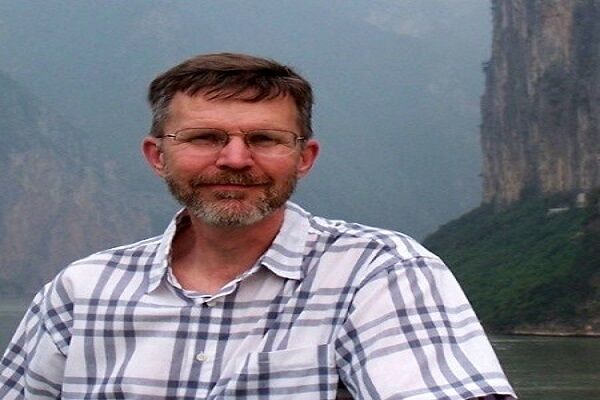TEHRAN(Bazaar) – “A Third Way, The Origins of China’s Current Economic Development Strategy” is a book written by Lawrence C. Reardon and published by Harvard University Press.
From 1949 to 1978, communist elites held clashing visions of China’s economic development. Mao Zedong advocated the “first way” of semi-autarchy characteristic of revolutionary Stalinism (1929–34), while Zhou Enlai adapted bureaucratic Stalinism (1934–53) to promote the “second way” of import substitution industrialization. A Third Way tells the story of Deng Xiaoping’s experimentation with export-led development inspired by Lenin’s New Economic Policy and the economic reforms of Eastern Europe and Asia.
Having uncovered an extraordinary collection of internal party and government documents, Lawrence Reardon meticulously traces the evolution of the coastal development strategy, starting with special economic zones in 1979 and evolving into the fourteen open coastal cities, the Hainan SEZ, and eventual accession to the global trade regime in 2001. Reardon details how Deng and Zhao Ziyang tackled large-scale smuggling operations, compromised with Chen Yun’s conservative views, and overcame Deng Liqun’s ideological opposition. Although Zhao Ziyang was airbrushed out of official Chinese history after June 4, 1989, Reardon argues that Zhao was the true architect of China’s opening strategy. A Third Way provides important new insights about the crucial period of the 1980s and how it paved the way for China’s transformation into a global economic superpower.
Following is the interview with Professor Lawrence C. Reardon about this book:
Lawrence C. Reardon is Associate Professor of Political Science at the University of New Hampshire.
Lawrence C. Reardon received his Ph.D. in political science from Columbia University. He wrote The Reluctant Dragon: The Impact of Crisis Cycles on Chinese Foreign Economic Policy (University of Washington Press, 2001), and has written on China's foreign policy for China Quarterly, The Journal of Contemporary China, China Business Review, and The Journal of Shenzhen University. He translated two volumes of key Chinese policy documents concerning China's coastal development strategy (Chinese Law and Government, 1994). He also publishes on the politics of religion in Asian states (Journal of Current Chinese Affairs, 2011), co-edited the volume, The Catholic Church and the Nation-State (Georgetown University Press, 2006).

He is currently completing a follow-up manuscript on Chinese foreign economic policy in the 1980s, and an historical analysis of Chinese government religious policy. He is a research associate at Harvard University's Fairbank Center, was a Luce fellow at the Woodrow Wilson International Center for Scholars, and a special researcher at Jinan University. At the University of New Hampshire, he is an associate professor of political science, and is the coordinator for Asian studies.
Bazaar: What has been your main question in this book?
Reardon: I have always been fascinated by the amazing economic success stories of East Asia, including Japan, South Korea, Taiwan, and Hong Kong. After undergoing a period of inward oriented economic development, they adopted outward oriented development that embraced the international economy, which they treated as an engine for domestic development. I questioned why it took China nearly forty years to embrace outward oriented development, which has enabled China to become an economic superpower.
Bazaar: What Hypothesis did you use to answer this question? What is your central argument?
Reardon: I have adopted an opinion group approach that focusses on differing beliefs and experiences of the top policy elites, who formed opinion groups coalescing around a particular strategy to achieve the state’s long term goals of a strong defense, a self-reliant economy, and maintaining the party-state’s hegemony over the politics, economy and people.
There have been three different development strategies since 1949:
1. The Revolutionary Stalinists, which included Mao Zedong, believed in a more normative path to accelerate the socialist transformation of society similar to the policies enacted by Stalin in the late 1920s, which resulted in the Great Leap Forward and the Third Front/Cultural Revolution. To achieve self-reliance, China needed to enact a semi-autarkic strategy.
2. Bureaucratic Stalinists, which included Premier Zhou Enlai and Chen Yun, believed in a more remunerative path to promote a moderate, gradual process of socialist transformation through the state plan. This resulted in the Four Modernizations, and its 4-3 and New Great Leap Forward plans of import substitution industrialization. Disagreements among these opinion groups over the best path to self-reliance condemned China to a cycling within the inwardly oriented development regime between import substitution and semiautarkic strategies beginning in the early 1960s to the late 1970s.
3. By the late 1970s/early 1980s, the Revolutionary Stalinist approach was discredited, and the leadership promoted Bureaucratic Stalinism, but realized that the ISI strategy had major flaws. While Chen Yun continued to promote Bureaucratic Stalinism and moderate planned growth throughout the 1980s, I argue that a new opinion group arose, the International Leninists, which included Deng Xiaoping and Zhao Ziyang . They promoted experiments with outward oriented development, including welcoming foreign direct investment and expand foreign exports. This resulted in the establishment of a more decentralized economy, the special economic zones, and China’s eventual accession to the GATT/World Trade Organization.
4. Chinese leaders maintained their long-term goals of a strong defense and the party-state’s hegemony. However after 40 years, they learned that outward oriented development was a more effective strategy than self-reliance.
Bazaar: What was the necessity of writing this book?
Reardon: I think the Chinese case demonstrates how leaders can undergo complex learning to transform their thinking about fundamental policy concepts, including development policy. China’s phenomenal growth did not occur overnight, but was the result of elites searching for the best pathway of development to unleash the productive energies of the Chinese people.
Also, I was fascinated by the policy process, as I analyze the leaders’ speeches and writings with the actual formulated policies. It was fascinating to see how they overcome various implementation problems, including ideological objections and economic crimes.
But I also think it was important to describe Premier Zhao Ziyang’s vision of coastal development, which he enunciated as early as 1981. He is no longer officially included in party histories of the period, but his vision is what transformed China.















نظر شما